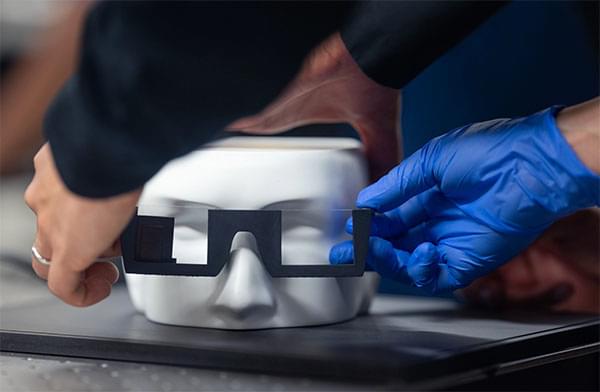Researchers in the emerging field of spatial computing have developed a prototype augmented reality headset that uses holographic imaging to overlay full-color, 3D moving images on the lenses of what would appear to be an ordinary pair of glasses. Unlike the bulky headsets of present-day augmented reality systems, the new approach delivers a visually satisfying 3D viewing experience in a compact, comfortable, and attractive form factor suitable for all-day wear.
“Our headset appears to the outside world just like an everyday pair of glasses, but what the wearer sees through the lenses is an enriched world overlaid with vibrant, full-color 3D computed imagery,” said Gordon Wetzstein, an associate professor of electrical engineering and an expert in the fast-emerging field of spatial computing.
Wetzstein and a team of engineers introduce their device in a new paper in the journal Nature (“Full-colour 3D holographic augmented-reality displays with metasurface waveguides”).








